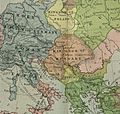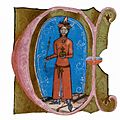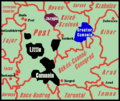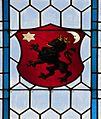Cumans facts for kids
The Cumans were a group of people who traveled a lot and lived in the wide open lands (called steppes) near the Black Sea and the Volga River. They were part of a larger group known as the Kipchaks, and they were very important in Eastern European history for several centuries. They were skilled horse riders and warriors, and they often moved their homes to find new pastures for their animals.
Contents
Who Were the Cumans?
The Cumans were a Turkic nomadic people. This means they spoke a Turkic language and moved from place to place instead of settling down. They were known for their distinctive appearance, often described as having fair hair and blue eyes, which was unusual for many other nomadic groups of the time. They were also famous for their unique hats made of sheepskin.
Their Lifestyle and Culture
The Cuman way of life was centered around their animals, especially horses, sheep, and cattle. They lived in portable tents called yurts, which they could easily pack up and move. Their main food was meat and milk products.
- They were excellent horsemen and archers.
- Their society was organized into different tribes.
- They often formed alliances with or fought against neighboring states.
- They had a rich oral tradition, including epic poems and songs.
- They left behind stone statues called balbals or babas, which represented their ancestors.
Where Did the Cumans Live?
The Cumans controlled a vast area of steppes, stretching from what is now southern Ukraine and Russia all the way to Central Asia. This large territory was sometimes called Cumania.
Their Influence on Neighbors
Because they controlled such a large area, the Cumans had a big impact on the countries around them. They often raided settled lands, but they also traded with them. Many rulers in Eastern Europe, like those in Kievan Rus' (early Russia and Ukraine) and Hungary, had to deal with the Cumans. Sometimes they fought, and sometimes they made peace treaties or even married into Cuman families.
The Cumans and Kievan Rus'
The Cumans had a long and complex relationship with the princes of Kievan Rus'.
- They often raided Rus' lands, taking goods and people.
- Rus' princes sometimes fought back against the Cumans.
- Other times, Rus' princes hired Cuman warriors to help them in their own wars.
- There were also marriages between Cuman princesses and Rus' princes.
Important Battles and Alliances
One famous story involving the Cumans and Rus' is The Tale of Igor's Campaign. This epic poem tells about a Rus' prince's unsuccessful campaign against the Cumans. Despite the conflicts, both sides learned from each other and sometimes even formed strong alliances.
The Cumans in Hungary
Many Cumans eventually moved into the Kingdom of Hungary.
- They were invited by Hungarian kings to settle there, especially after the Mongol invasions.
- The kings hoped the Cumans would help defend the kingdom.
- The Cumans in Hungary kept some of their traditions but slowly adopted Hungarian customs.
- King Ladislaus IV of Hungary was even known as "Ladislaus the Cuman" because his mother was a Cuman princess.
The Mongol Invasion and Cuman Decline
The arrival of the Mongols in the 13th century changed everything for the Cumans.
- The Mongols, led by Genghis Khan and his successors, swept across Eurasia.
- Many Cumans were defeated by the Mongols.
- Some Cumans joined the Mongol armies.
- Others fled to different regions, like Hungary, Bulgaria, or even Egypt.
Cuman Legacy in Other Lands
In Egypt, many Cuman warriors were sold into slavery and became part of the Mamluk army. These Mamluks were powerful warrior-slaves who eventually ruled Egypt for a long time. Many of them were of Cuman or Kipchak origin. In Bulgaria, a Cuman noble family founded the Second Bulgarian Empire.
Over time, the Cumans either blended into the populations of the lands they settled in or were absorbed by other groups. Their language and distinct culture gradually faded, but their history left a lasting mark on Eastern Europe and beyond.
Images for kids
See also
 In Spanish: Cumanos para niños
In Spanish: Cumanos para niños


















































